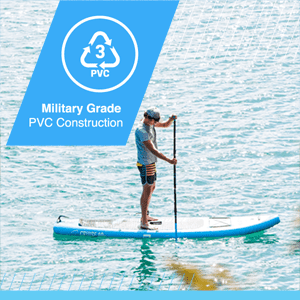A SUP board should work for your size. In the event that the board doesn’t uproot the right measure of water for your weight, you will not be upheld well and the board might feel shaky. Board volume and weight limit are two factors that influence how stable you will feel and how well the board will go through the water. Volume and weight limit are dictated by the length, width and thickness of the board. stand up paddle board producers consolidate these three measurements in various manners to accomplish distinctive execution attributes.

Volume: An oar board’s volume, communicated in liters, gives a sign of the board’s capacity to glide with weight on it. The higher the volume, the more weight the board can uphold. You can discover volume for a SUP recorded in the specs on REI.com.
Weight capacity: Each oar board has a rider weight limit, which is recorded in pounds in the specs on REI.com. Knowing the weight limit is significant since supposing that you’re excessively weighty for a board, it will ride lower in the water and be wasteful to paddle. When pondering weight limits, consider the aggregate sum of weight you will put on the board, including your body weight and the heaviness of any stuff, food, and drinking water that you’ll be taking with you.
Volume and weight capacity as it relates to hull type: Most planing-body sheets are exceptionally lenient, so insofar as you’re beneath the weight limit, the board will perform well for you. In any case, with relocation structure SUPs, volume and weight limit are more huge. SUP creators invest a ton of energy deciding the most proficient situation for uprooting sheets to be in the water. In the event that you overweight a dislodging board and cause it to sink excessively low, it will drag and feel slow. In case you’re excessively light for a board, you will not sink it enough and the board will feel weighty and hard to control.
SUP Fins :
Blades add following and strength to an oar board. As a general rule, bigger blades with more extensive bases and longer front edges will follow straighter and give more soundness than more modest balances. Then again, a more modest balance gives better mobility. Most balances are removable, so you can trade out balances and take them off for capacity.
There is a wide range of choices for how balances are designed on the lower part of your SUP. Some famous SUP blade designs include:
Single fin: Many SUPs incorporate a solitary balance set in a blade box and got with a nut and screw. The balance box has a channel for the balance to slide to and fro. The single balance gives great following and negligible drag, settling on it a decent decision for flatwater rowing.
3-fin setup: Likewise called an engine, this arrangement advances straight following on flatwater and offers great control in surf. Each of the three balances is as a rule about a similar size.
2+1 setup: This design incorporates a bigger focus blade with a more modest balance on each side of it. This is a typical arrangement on SUPs intended for surfing.
Fins for inflatable SUPs: Inflatable SUPs can have any of the balance designs previously recorded. What separates them is that they highlight either adaptable elastic blades joined to the board or separable semi-inflexible balances.

